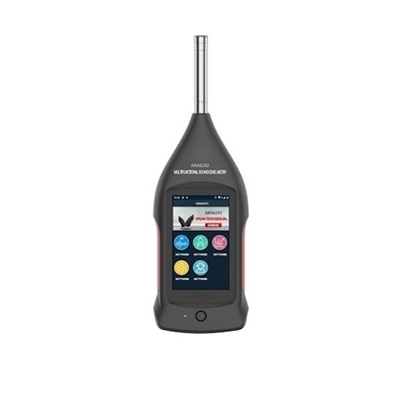A sound level meter is an instrument that measures sound intensity and is widely used in environmental protection, noise control, sound quality assessment, and other fields. To ensure the measurement accuracy and reliability of the sound level meter, it needs to be calibrated regularly. This document will introduce in detail how to calibrate the sound level meter.
Equipment required for calibration
To perform sound level meter calibration, the following equipment and tools are required:
Sound level calibrator: used to provide standard sound signals to calibrate the accuracy of the sound level meter.
Test microphone: A sensor is installed on the sound level meter for receiving sound signals.
Test sound source: a device that can emit stable and adjustable sound signals.
Test preamplifier: used to amplify the weak signal received by the microphone for subsequent processing.
Sound level meter calibration steps
- Preparation before calibration: Ensure that the appearance of the sound level meter is intact and that all components are firmly connected; check whether the equipment and tools required for calibration are complete and intact; ensure that the test environment is quiet and without obvious noise interference. Check for obvious physical damage such as cracks, scratches, stains, etc. At the same time, check whether the display screen of the sound level meter is clear and whether the buttons work properly to ensure that the sound level meter is calibrated in good working condition.
Battery Check: In some cases, the sound level meter may be powered by batteries. Therefore, before starting calibration, the status of the battery must be checked. If the battery has been used for a while or has become insufficiently charged, it may need to be replaced to ensure that the sound level meter is functioning properly.
Check the calibrator: A calibrator is a device used to ensure the accuracy of sound level meter measurements. Before calibrating the sound level meter, you must check whether the calibrator is intact, within the validity period, and whether it matches the sound level meter to be calibrated. If there is a problem with the calibrator, the sound level meter cannot be calibrated. - Sound level calibration: Connect the sound level calibrator to the sound level meter, adjust the output of the test sound source, and make the sound level calibrator produce a standard sound signal. Record the reading of the sound level meter in each range, compare it with the standard value, and calculate the error.
- Response test: The response test is used to check whether the sound level meter responds accurately to sound signals of different frequencies. When conducting response testing, pass pure tone signals of different frequencies are often used as input to observe whether the output of the sound level meter matches the input signal. If deviation, then it is necessary to make appropriate adjustments to the sound level meter.
- Reading verification: When checking readings, a reference sound source of known accuracy is usually used as input to observe whether the sound level meter reading is consistent with the calibration value of the reference sound source matches. If deviations are found, the sound level meter will need to be adjusted appropriately.
- Environmental noise measurement: When calibrating a sound level meter, the influence of environmental noise must be considered. Therefore, ambient noise needs to be measured before and after calibration. If the ambient noise is too loud, it may affect the sound level meter reading. In this case, appropriate measures need to be taken to reduce the impact of environmental noise.
- Performance calibration: Calibrate performance indicators such as frequency response and microphone sensitivity of the sound level meter. Select appropriate test signals and test equipment as needed, record the data, and analyze it to determine whether the sound level meter performance meets the requirements.
- Data processing: Analyze and process the data recorded during the calibration process, calculate errors and performance indicators, and evaluate the accuracy and reliability of the sound level meter.
- Result determination: Based on the data processing results, determine whether the sound level meter meets the calibration standards. If not, necessary adjustments or repairs must be made, and recalibration must be performed.
- Records and reports: Record the calibration process and results in detail to form a complete calibration report. The report must include equipment information, calibration environment, test data, error analysis, etc.
- Maintenance: Clean and maintain the sound level meter regularly to keep the equipment in good condition. During storage and use, attention should be paid to moisture-proof, dust-proof, shock-proof, and other measures to ensure the long-term stability and reliability of the equipment.
The purpose of calibration results
Validity of calibration certificate: A sound level meter that only issues a calibration certificate is generally invalid because the calibration certificate only issues a basic data report, and the report issued cannot cover all required inspection items. Therefore, it is impossible to judge the accuracy level of the instrument based on the data in the calibration report or even whether the sound level meter is qualified.
Credibility of the calibration results: Whether the calibration results of the sound level meter are accurate and reliable depends on factors such as the accuracy of the calibrator, the stability of the test environment, and the professional level of the test personnel.
Response speed and reading stability: Response speed and reading stability are important indicators of sound level meter performance. The calibration results can reflect the response speed and reading stability of the sound level meter under sound signals of various frequencies and amplitudes. If the response speed and reading stability are good, then the performance of the sound level meter is better.
Error analysis: By comparing the calibration results with a reference sound source of known accuracy, the error of the sound level meter can be calculated. If the error is smaller, then the sound level meter performs better.

